TRUE ROMANCE
Inside the two-year restoration of classic superyacht Marala
Updating a classic yacht while preserving her spirit is a delicate task. Nigel Sharp learns how the owner of 59-metre Marala pulled it off – uncovering her original lines, enhancing her historical appeal and fitting her for a 21st-century lifestyle
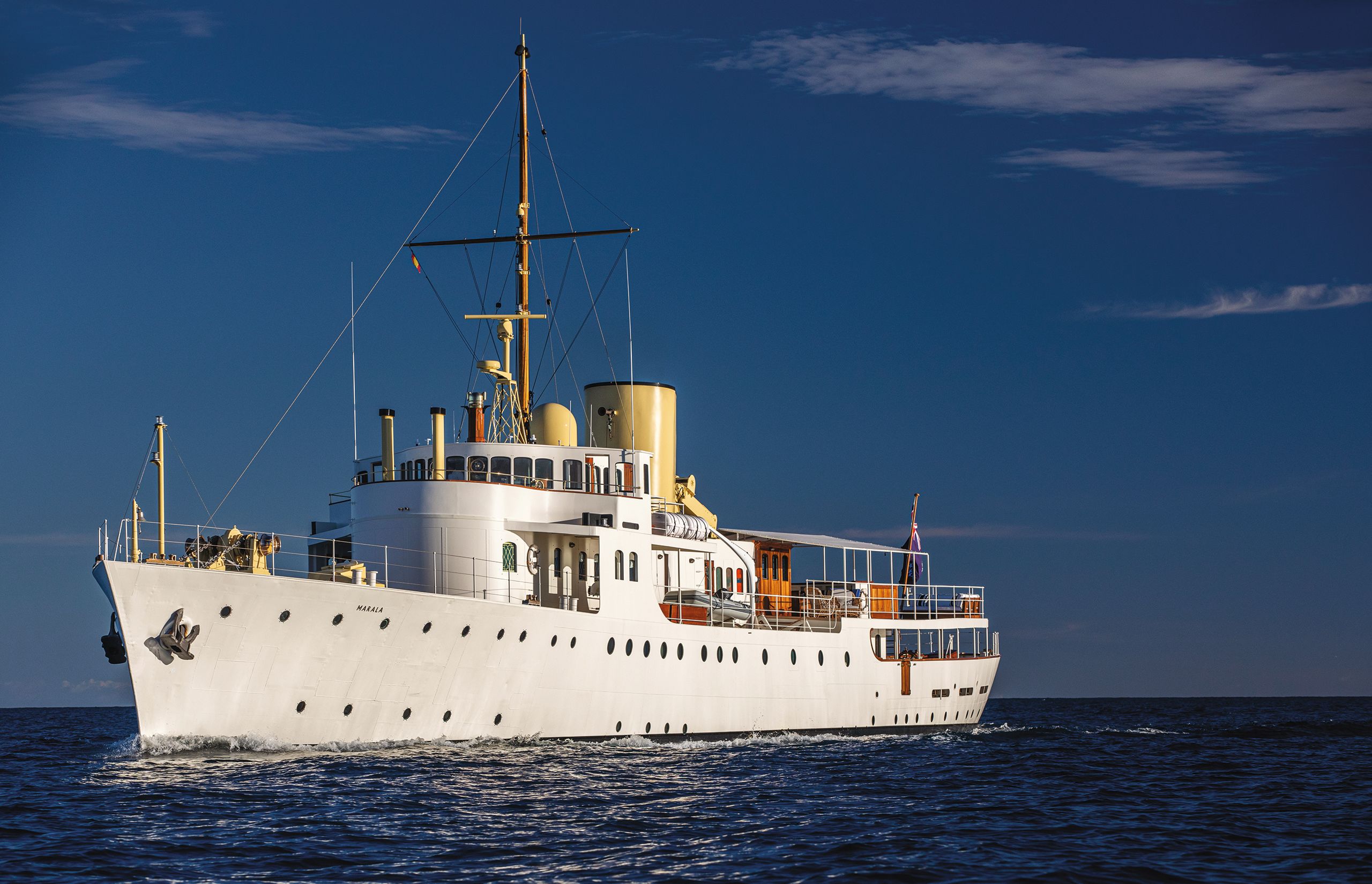
Seamlessly merging the old and the new: that was the priority in the top-to-toe restoration of 1931 Camper & Nicholsons motor yacht Marala. “The objective has been to be true to the spirit of the vessel,” says the new American owner, “to preserve elements of her past – from both her original era and successive eras – but also to bring in new design elements so as not to be captive to it. We wanted a comfortable boat and we wanted a pretty boat.” That is quite some balancing act.
Life afloat for the owners began on the Thames when they lived in London with their three small children in the 1990s. Having initially rented a house overlooking the river, they bought a 1909-launched houseboat where they lived for seven years, during which time they “pretty much rebuilt everything”. They then moved to Hong Kong where they owned not one, but two locally built 1930s boats: Wayfoong, which had been built for the Hongkong and Shanghai Banking Corporation, and Java, which had been commissioned by the British government.
The owners “had this little game” that they played with their long-time captain, Chris Lawrence, whereby they regularly kept an eye out for other yachts for sale and exchanged emails about them. When Lawrence shared the sales details of Marala, it prompted the response: “Well, that one really is special.” After flying to Greece to look at her, the owner “just fell in love with the boat. I was captivated. So we had a survey which basically said that she’s an old vessel and you’re going to be in trouble if you buy her. And I said, ‘Yeah, I understand that,’ and we bought her.”
Marala was commissioned in 1930 by Montague S Napier, an aircraft engine and car manufacturer, but he never saw her completed – he died in January 1931, just a few weeks before the yacht launched.
“We wanted a comfortable boat and we wanted a pretty boat.”
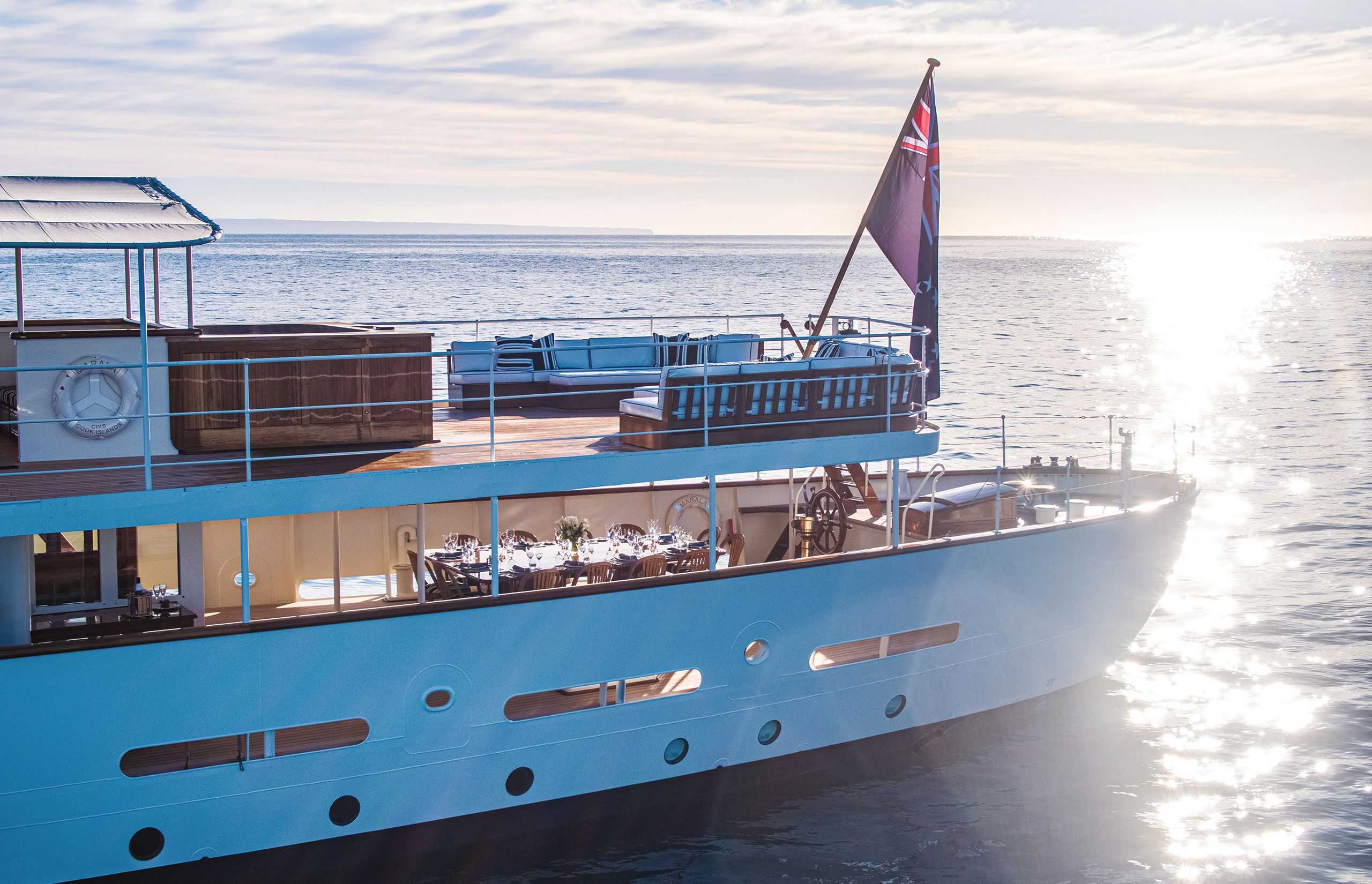
She was temporarily registered with the name 388 – her C&N build number – and while the yard sought a new owner, she filled the yachting press. Yachting World reported with understated approval that, “She is a typical Nicholson motor yacht, from her destroyer bow to her cruiser stern, with her upper works so proportioned that there is no suggestion of top heaviness, in spite of the wonderful extent of her accommodation.”
“I was captivated. So we had a survey which basically said that she’s an old vessel and you’re going to be in trouble if you buy her. And I said, ‘yeah, I understand that’, and we bought her”
Towards the end of 1931, aircraft manufacturer Richard Fairey purchased her and named her Evadne. During the 1930s, Fairey used her as a mothership for his three C&N sailing yachts: the 1930 J Class Shamrock V and the 12 Metre yachts Flica and Evaine. In 1939 she was requisitioned by the British Navy for service in the Second World War and returned to Fairey in 1945. Evadne was then sold to Richard Reynolds, the son of the founder of the R J Reynolds Tobacco Company. He renamed her Zapala but he only ever intended to keep her for a year while he was waiting for his own C&N yacht, the 35-metre ketch Aries, to be completed.
Marala won the Rebuilt Yachts category at the World Superyacht Awards 2023
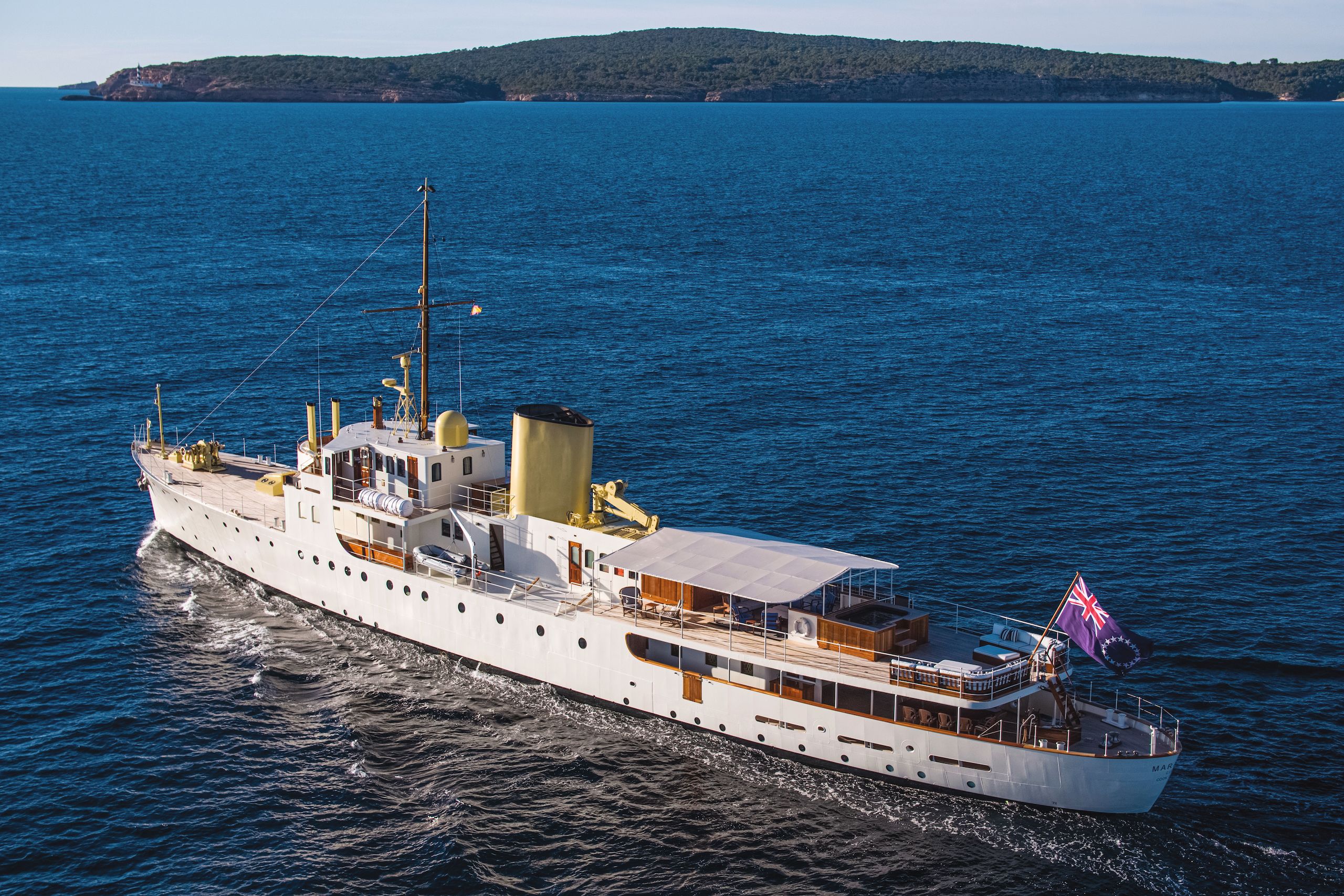
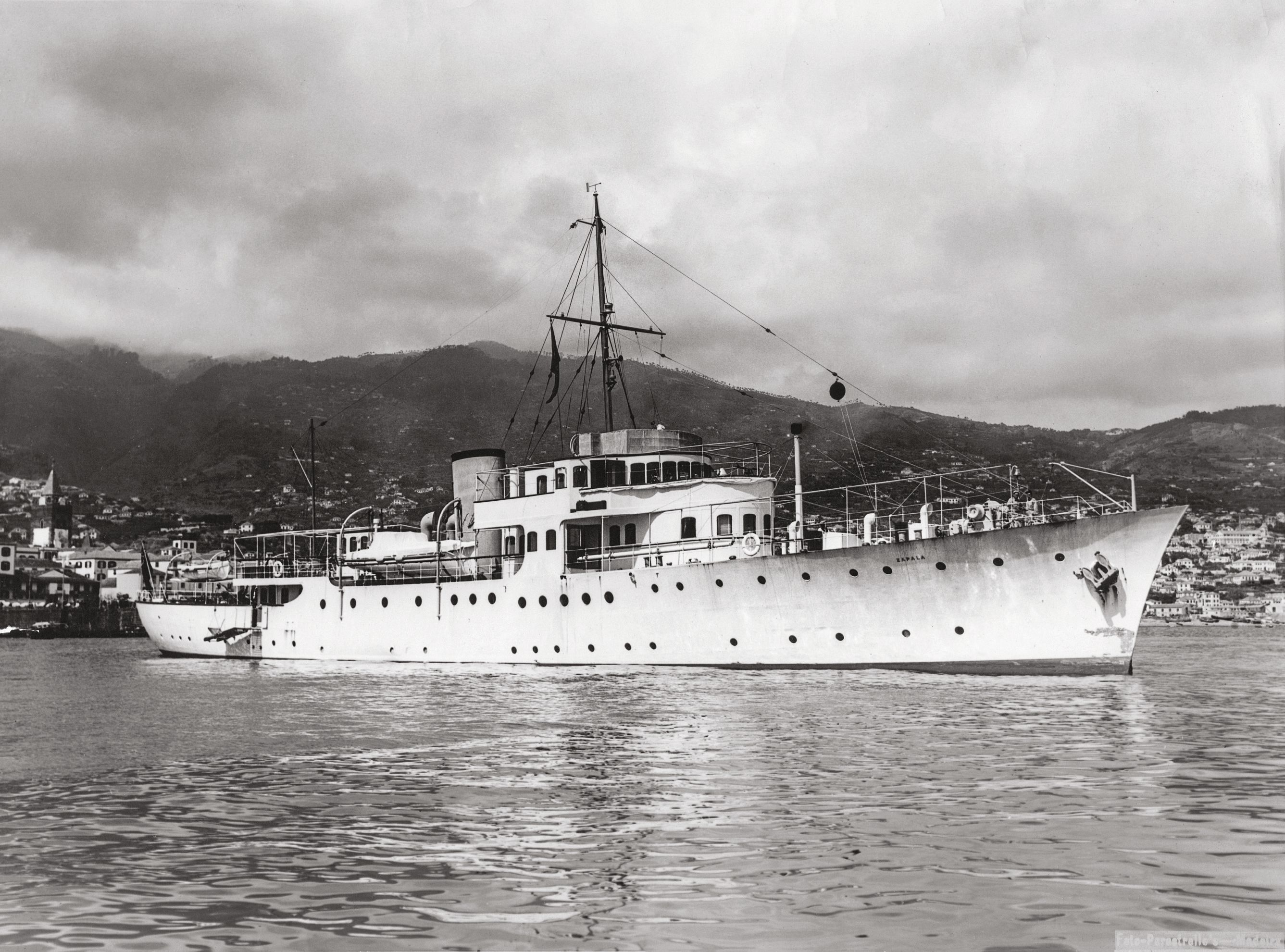
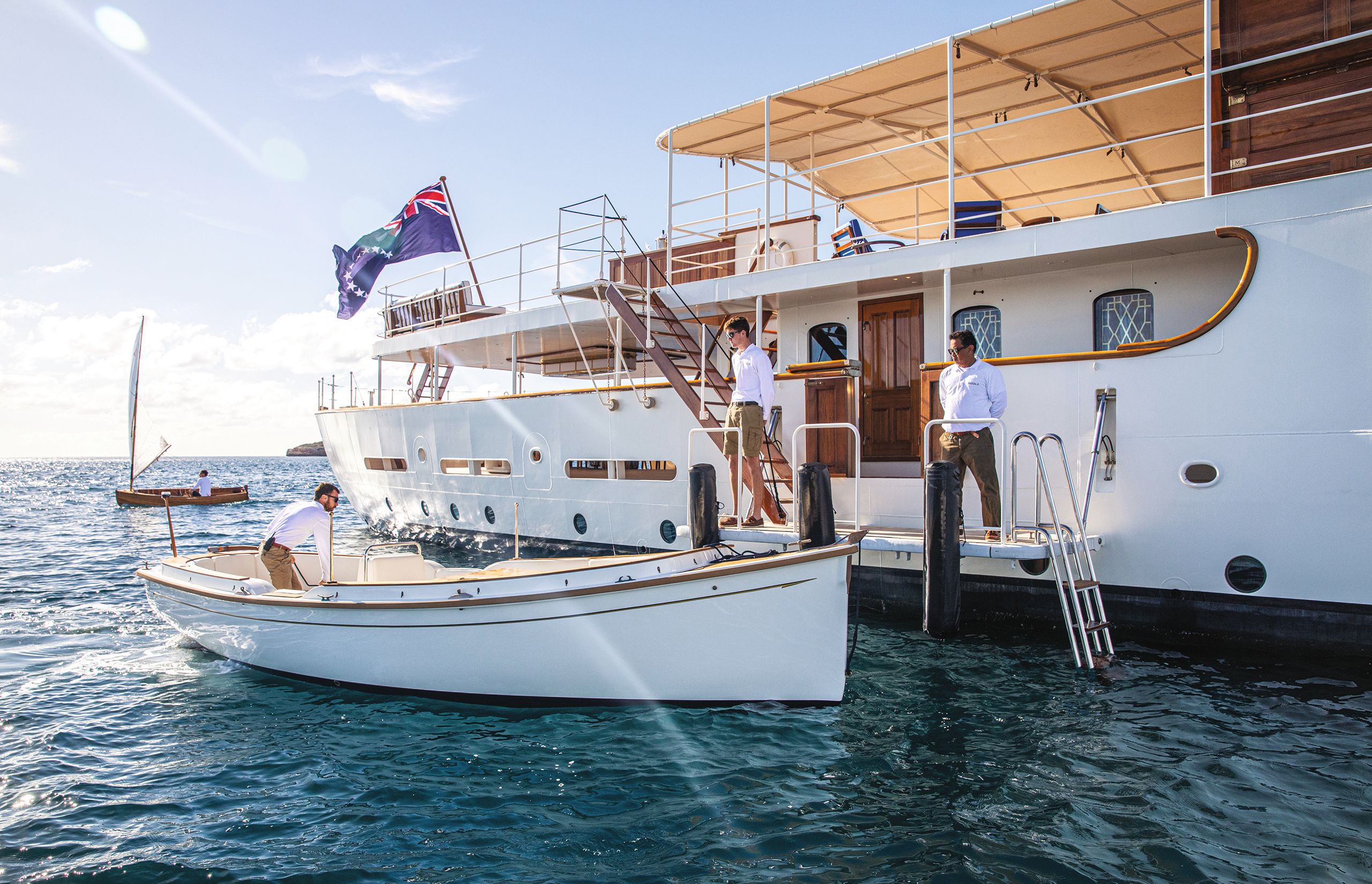
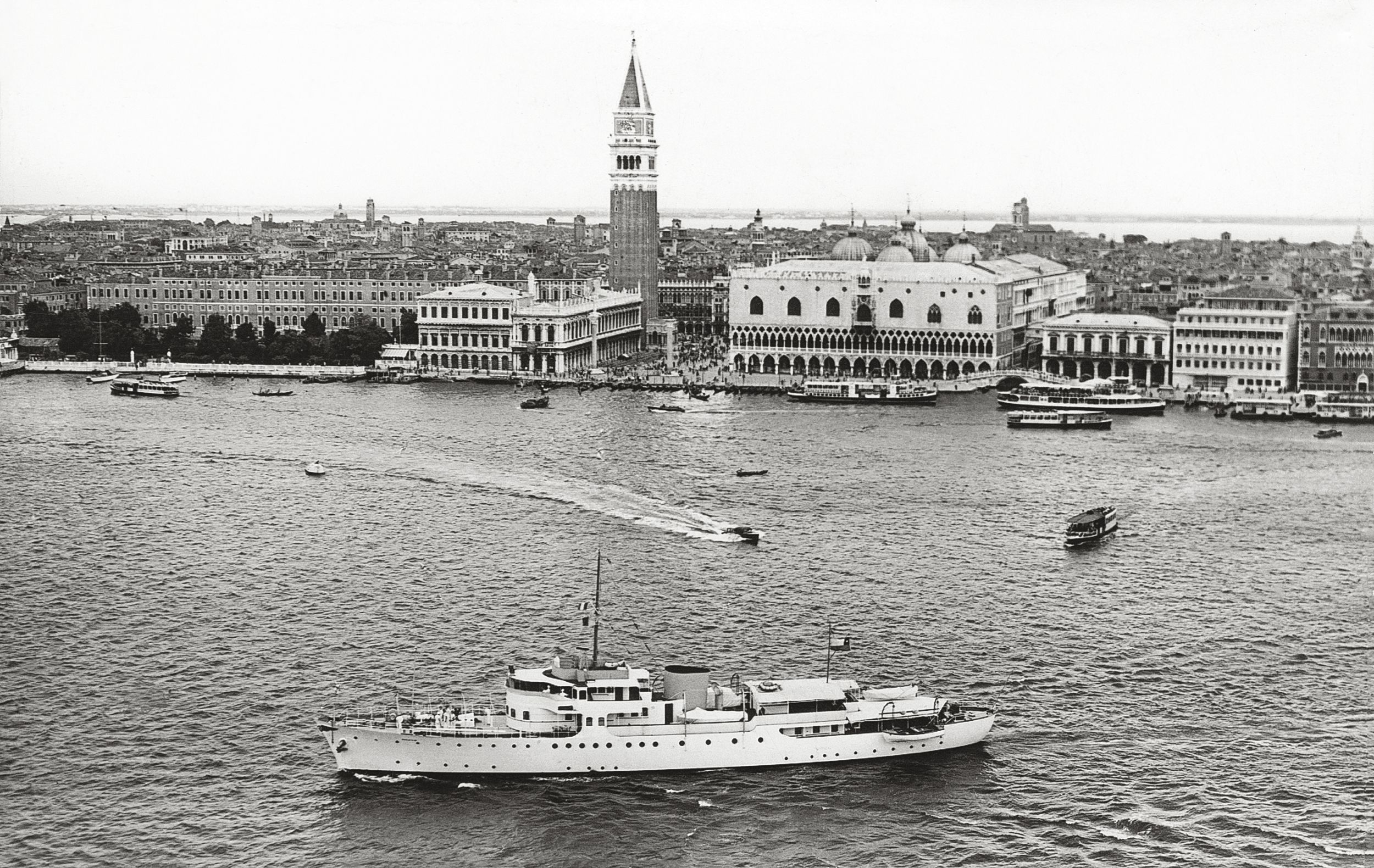

STUART PEARCE - YACHTSHOT
STUART PEARCE - YACHTSHOT

STUART PEARCE - YACHTSHOT
STUART PEARCE - YACHTSHOT

STUART PEARCE - YACHTSHOT
STUART PEARCE - YACHTSHOT
Marala in the 1950s: above, when she was named Zapala. Top right: her Cockwells’ Duchy 21 tender with her International 12 in the background, which was originally designed by George Cockshott in 1913
With Zapala on the market again, potential purchaser Arturo Lopez-Willshaw – a Chilean whose family had made their fortune in the guano trade – was given a tour of the yacht by Charles A Nicholson (whose uncle Charles E Nicholson had designed her), at the end of which he said that he liked her very much.
A few weeks later, Nicholson phoned him to see if he was interested in taking the matter further. “Oh,” replied Lopez-Willshaw, “I told you I liked her so I presumed I had bought her.” He then did so, renamed her Gaviota IV and kept her until his death in 1962.
The next owner was Robert de Balkany, who changed the name to Marala – derived from the names of his daughters Marina and Alexandra – and whose second wife was Princess Maria Gabriella of Savoy, the daughter of the last King of Italy, Umberto II. After de Balkany died in 2015, Marala was held up in probate for two years before she was bought by her current owners.
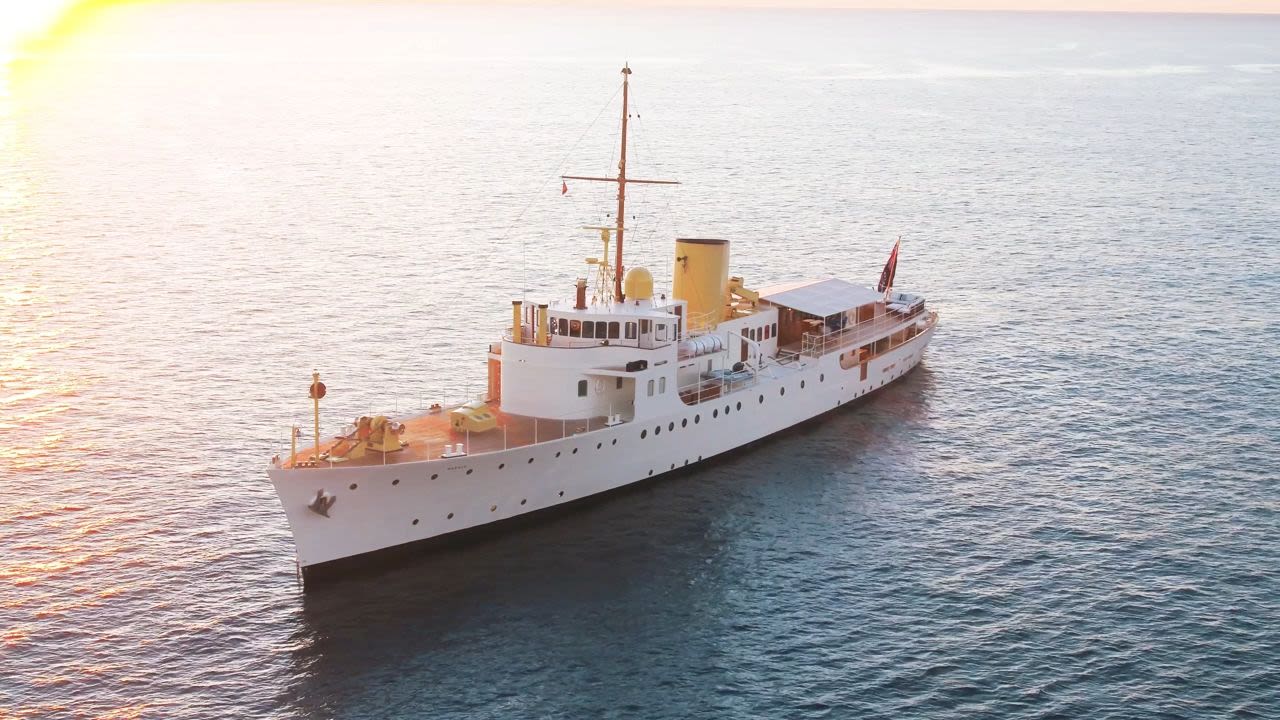
The owners’ initial plan was to refit Marala gradually, while keeping her in commission. But after a family cruise in the Greek Islands in the summer of 2017, Captain Lawrence suggested it would be significantly more efficient to take her out of commission and do all the work in one go. So Marala spent two years at Melita Marine in Malta, where the shipyard replaced a great deal of the steelwork in the forward part of the hull, reconditioned the original 750-horsepower eight-cylinder MAN diesel engines and installed a bow thruster. She was then shipped to Falmouth by DYT’s Yacht Express for work to continue at Pendennis Shipyard.
Over the years a number of changes had been made to Marala’s external appearance and layout. Originally the upper deck superstructure encompassed only a small shelter aft of the funnel and a captain’s cabin, which had an open bridge above it. Within a couple of years, the bridge had been enclosed and the space below it converted into an owner’s cabin.
Subsequent modifications included extending the upper deck aft; adding a fixed awning aft of the shelter; extending the superstructure around the funnel, between the owner’s cabin and the shelter; replacing the railings around the foredeck with solid bulwarks; and extending the small sheltered areas each side of the owner’s cabin aft and adding three more windows to the two original ones. This last modification allowed the addition of an extra cabin on one side that was initially used by Lopez-Willshaw’s lover – Baron de Redé – and was known as the Baron’s cabin, which was later used as a storage area.
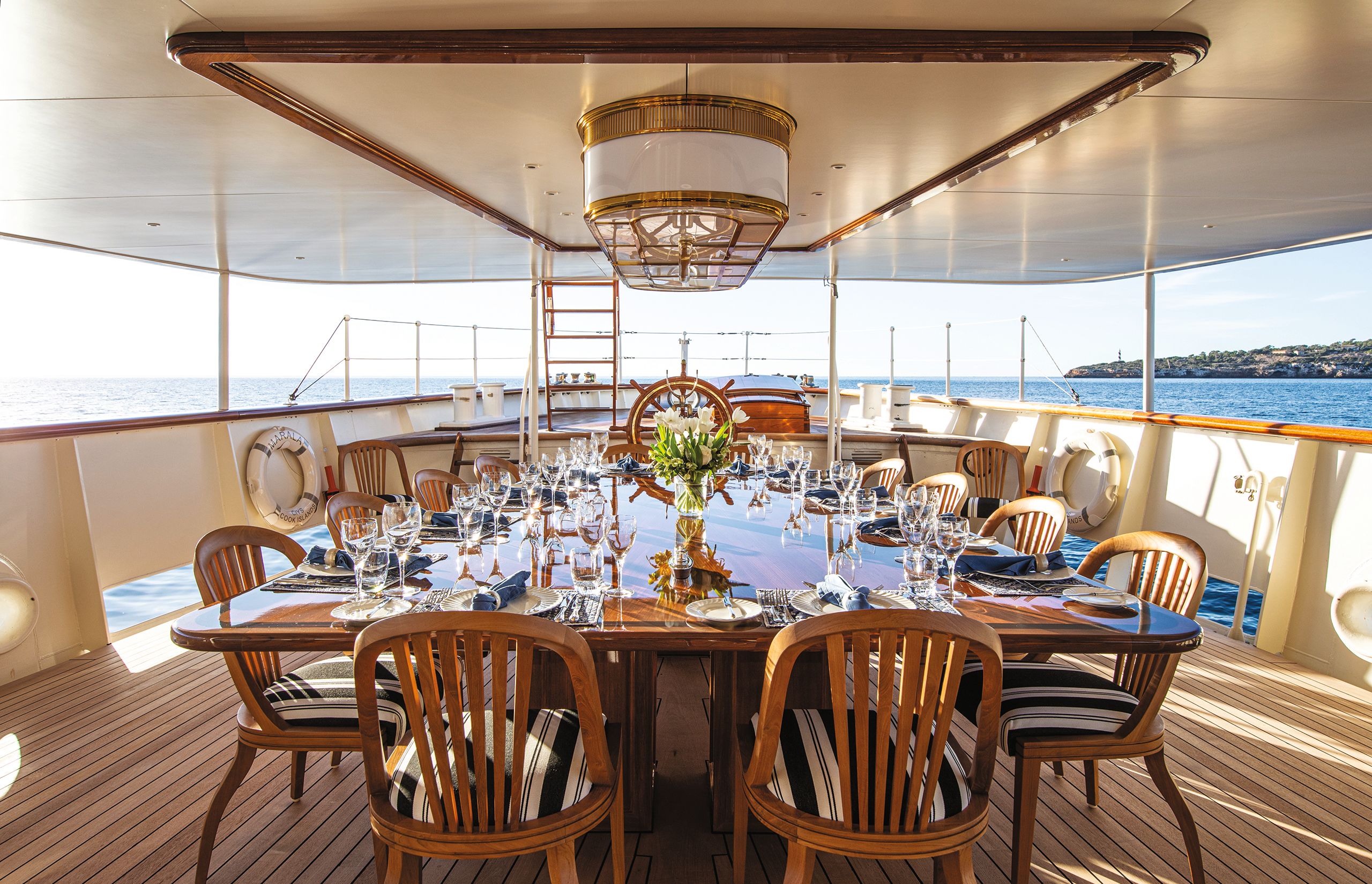
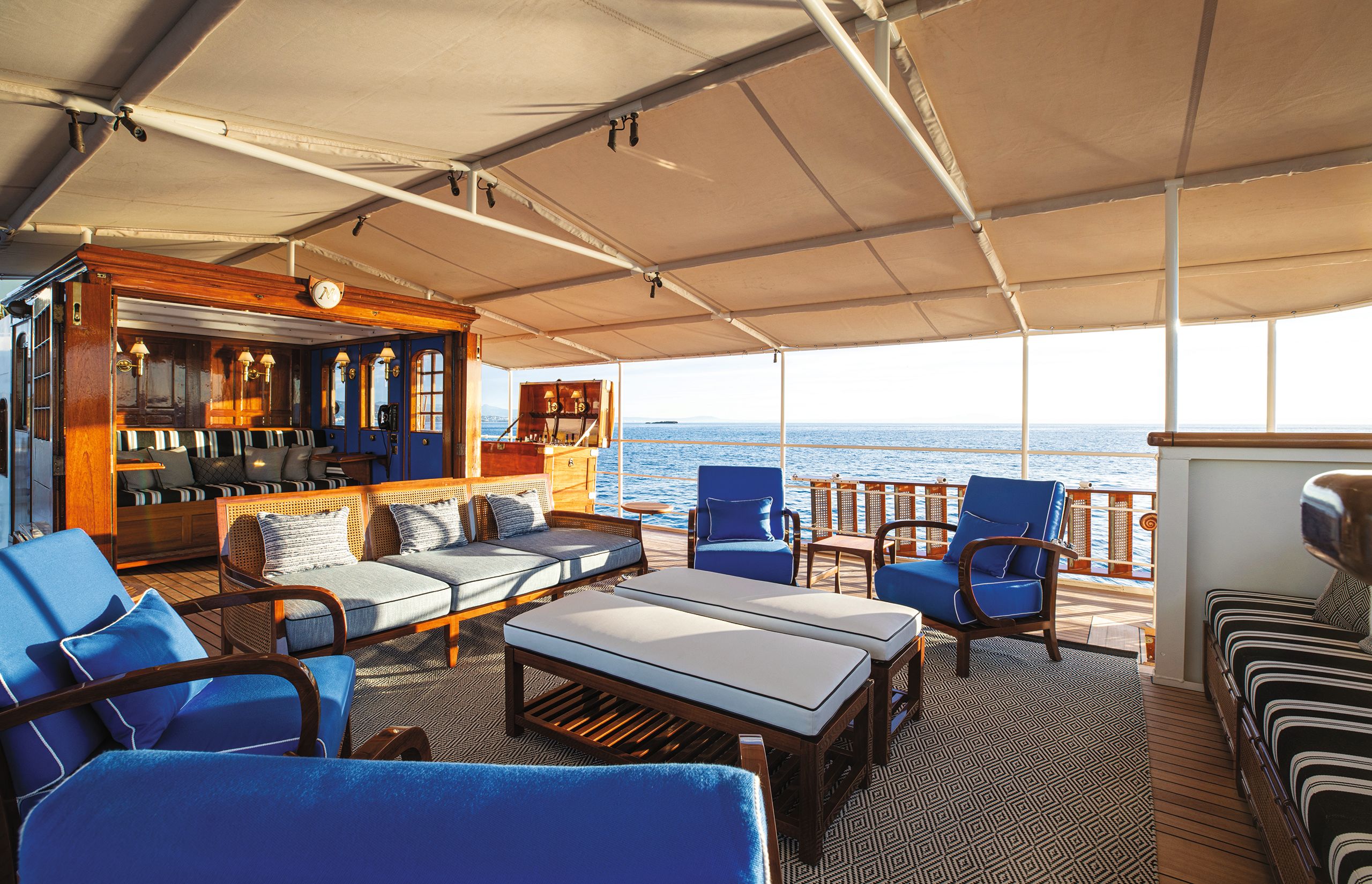
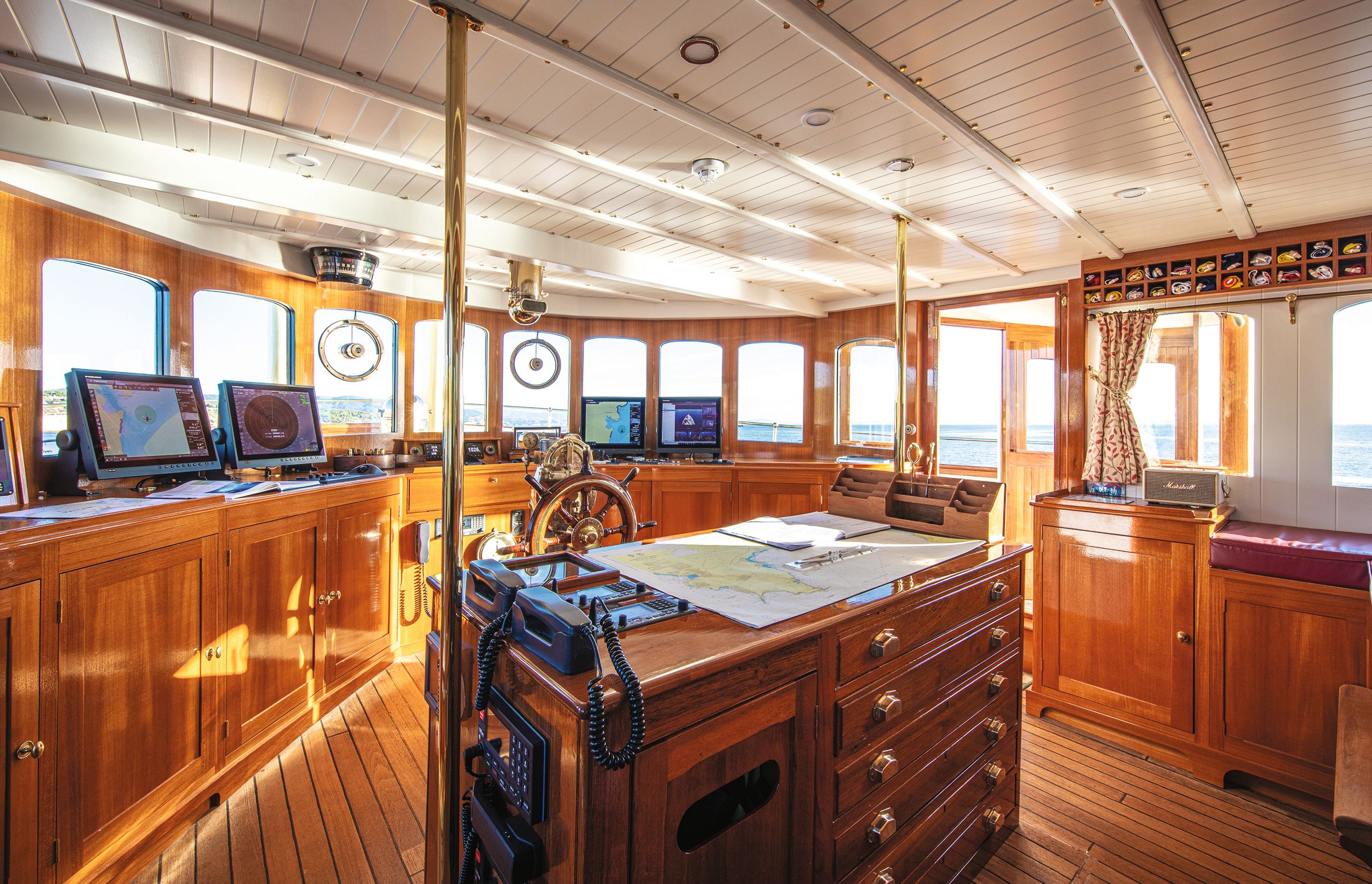
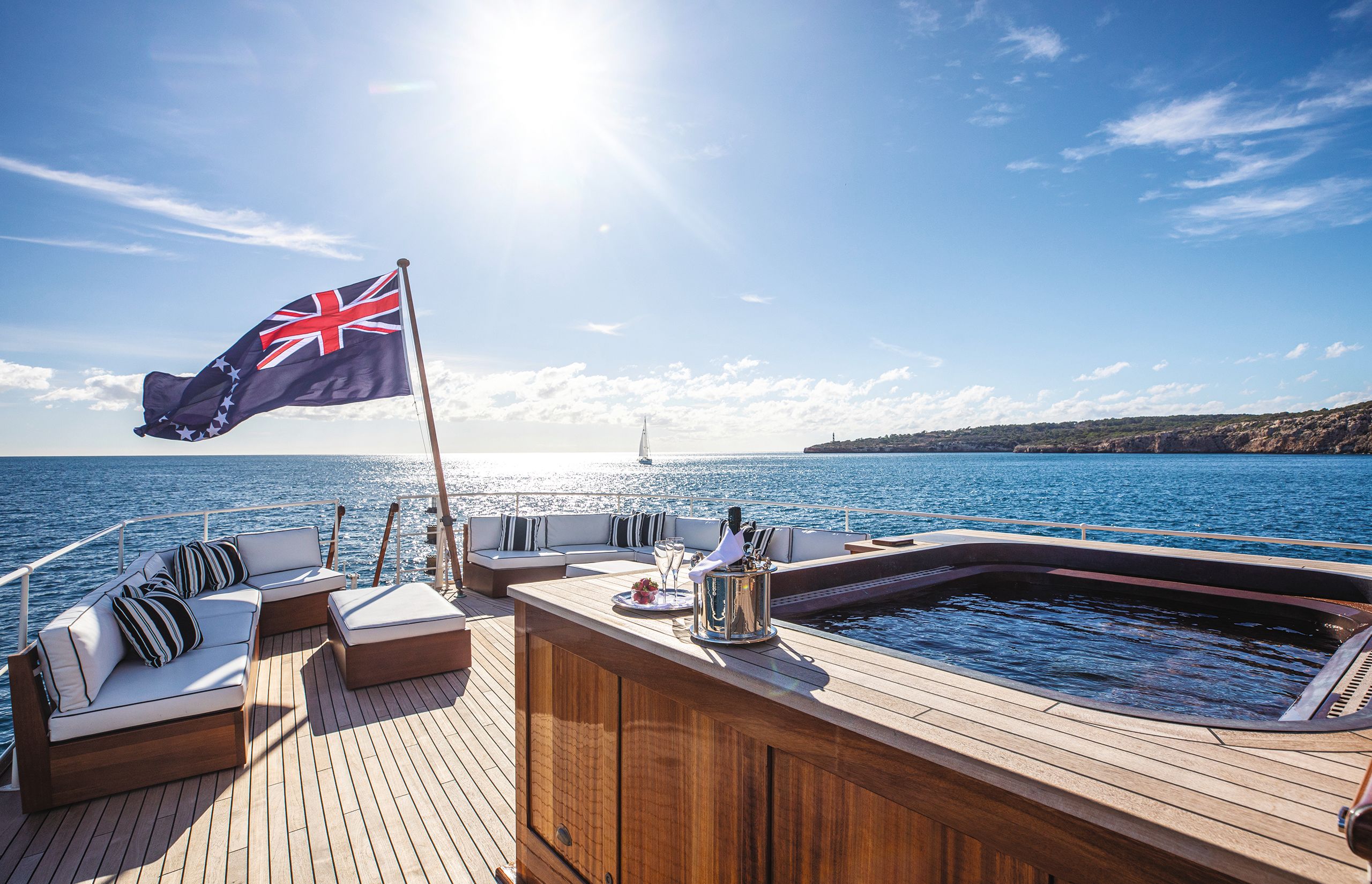

STUART PEARCE - YACHTSHOT
STUART PEARCE - YACHTSHOT

STUART PEARCE - YACHTSHOT
STUART PEARCE - YACHTSHOT

STUART PEARCE - YACHTSHOT
STUART PEARCE - YACHTSHOT

STUART PEARCE - YACHTSHOT
STUART PEARCE - YACHTSHOT
The new custom-made copper spa pool on the upper deck is clad in teak recycled from the bulwark capping. Bottom left: the enclosed bridge retains some of its original joinery and a clock that was issued by the Ministry of Defence during WWII. Top left: the helm that is just visible on the aft deck isn’t ornamental; it’s part of the emergency steering system. Top right: the upper deck shelter has been there since the yacht was built. It has a pull-down projector screen aft that can be viewed from inside or out
“But the ship got really bulky, was top heavy and had lost some of her elegant lines,” says Nathan Hutchins of the London-based design studio Muza Lab, which was responsible for Marala’s latest design work. “So there was a little bit of a stripping back.” This included reverting to the two-window arrangement on each side of the owner’s cabin (which has now regained a better view) and to the railings around the foredeck.
Each of the guest cabins on the lower deck has now been given a name with some significant reference to Marala’s history: forward of the engine room there are the Evadne and Gaviota cabins; while the cabins aft are Japan (where there were a number of Japanese prints on display when the owners bought the boat), Savoy and 388. Originally the 388 cabin was divided into two along the centreline with the bathrooms aft. Some time ago this was converted into one cabin and the area where the bathrooms were has now been incorporated into the lazarette.
No other significant layout changes have ever been made but almost all of the internal joinery and fabrics have now been renewed. There was very little of the original joinery remaining anyway, as much of it had been replaced by the French designer Georges Geffroy during a 1950s refit. All of the new joinery is made from American walnut from just two trees, one for all the lower deck joinery and the other for the saloon, dining room and owner’s cabin. The craftspeople went to great efforts to replicate the style of Camper & Nicholsons’ original 1930s joinery, and the lightly stained walnut was only moderately lacquered so that the open grain remains apparent.
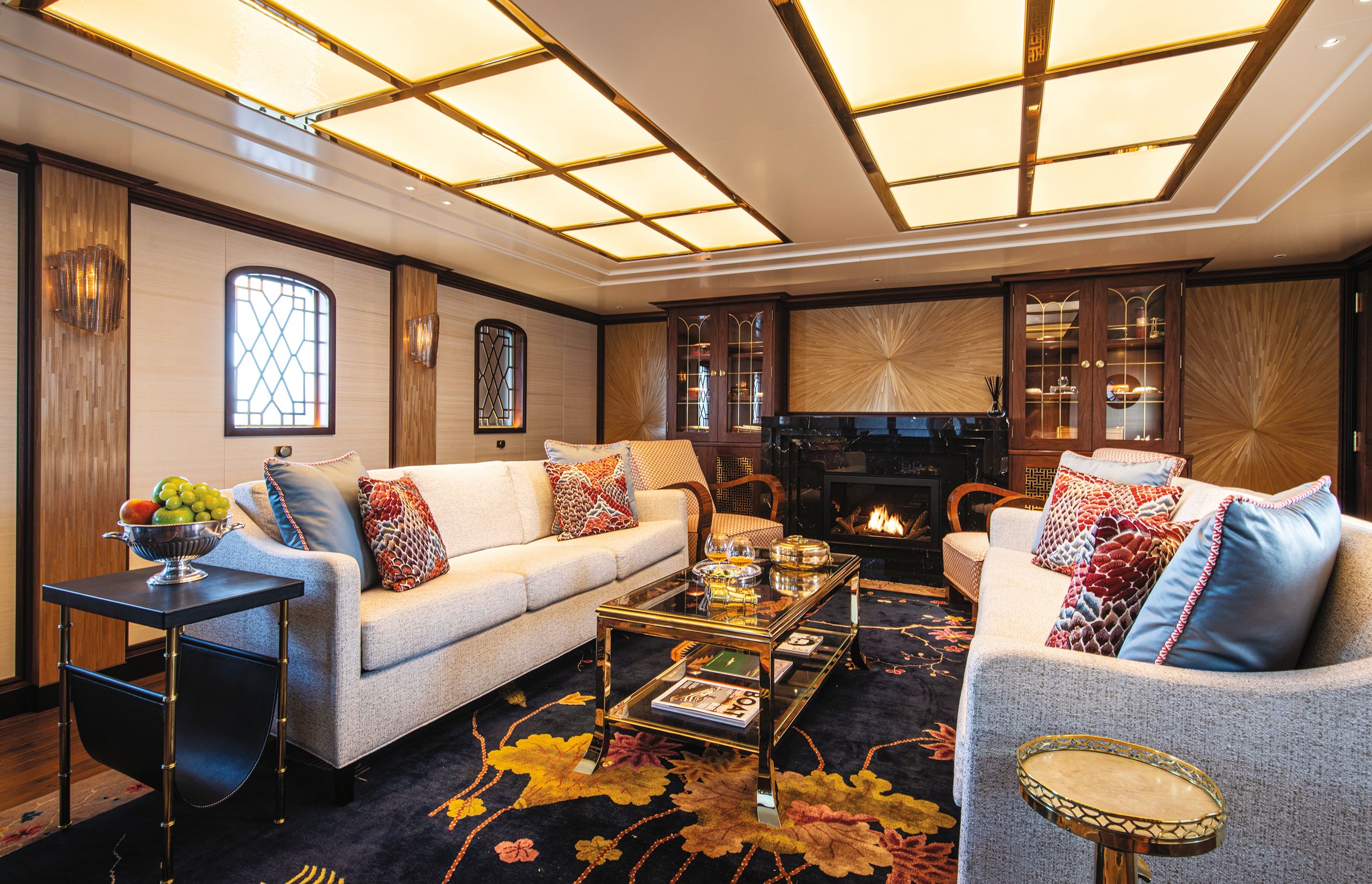
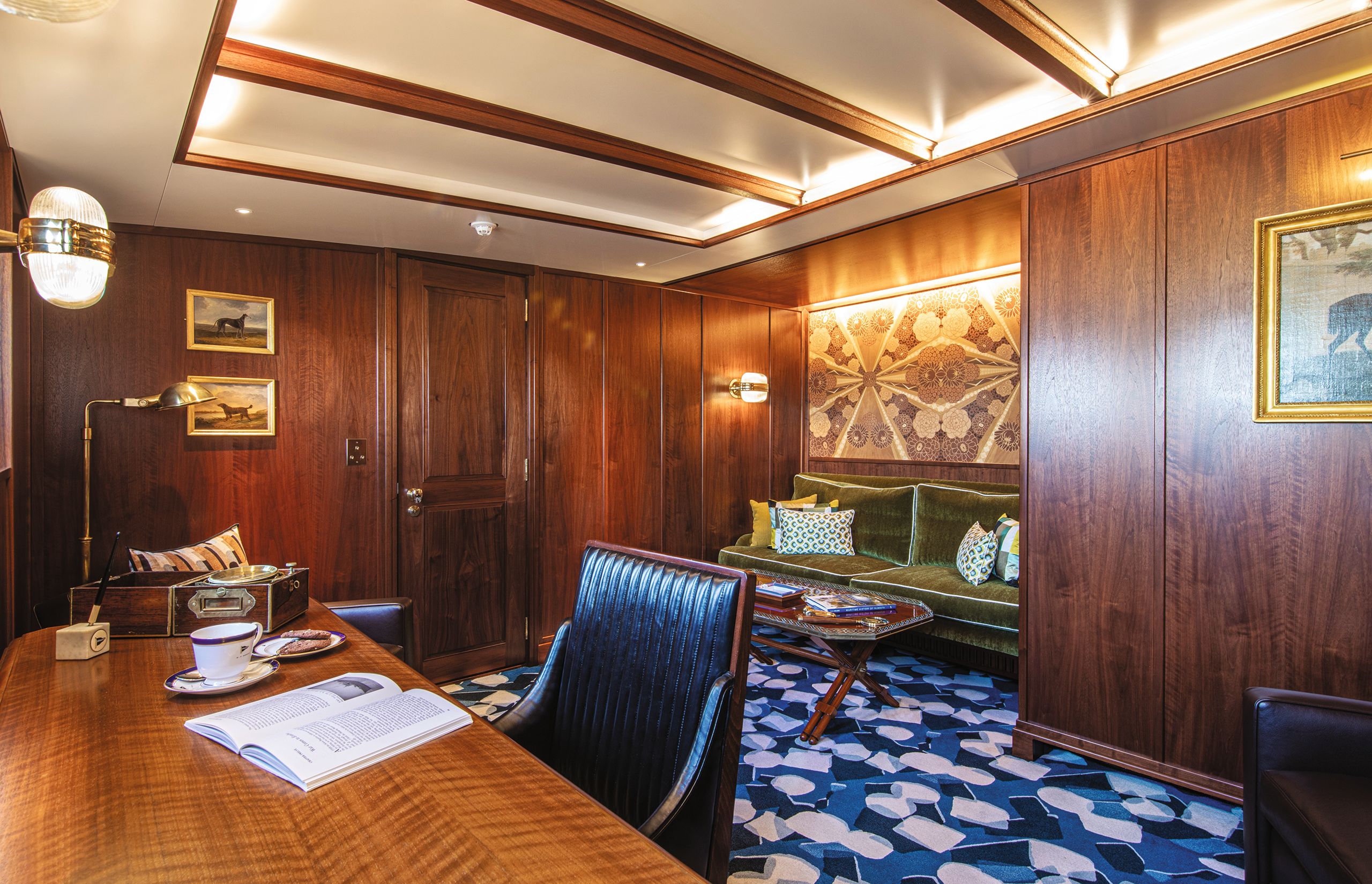
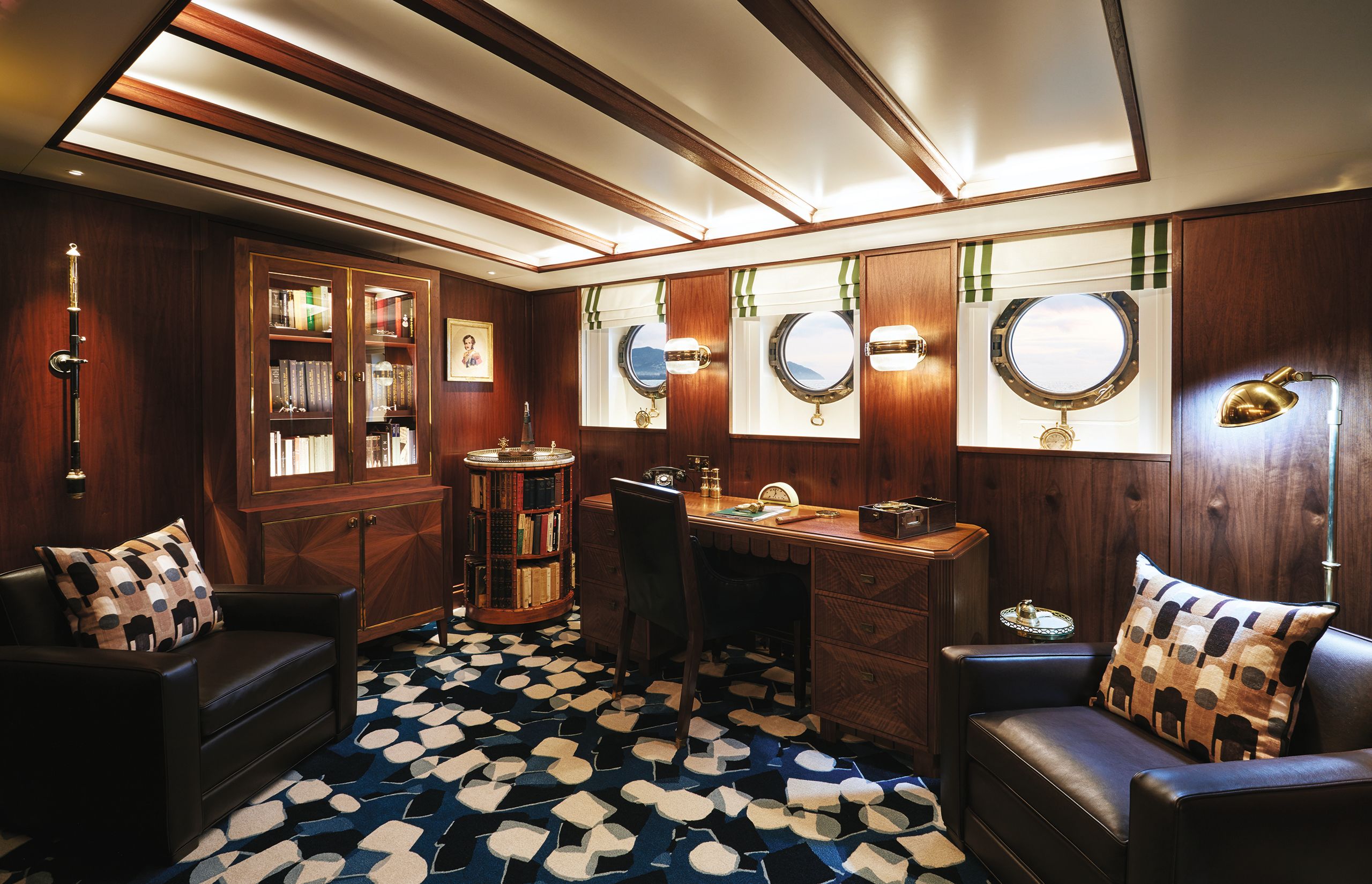
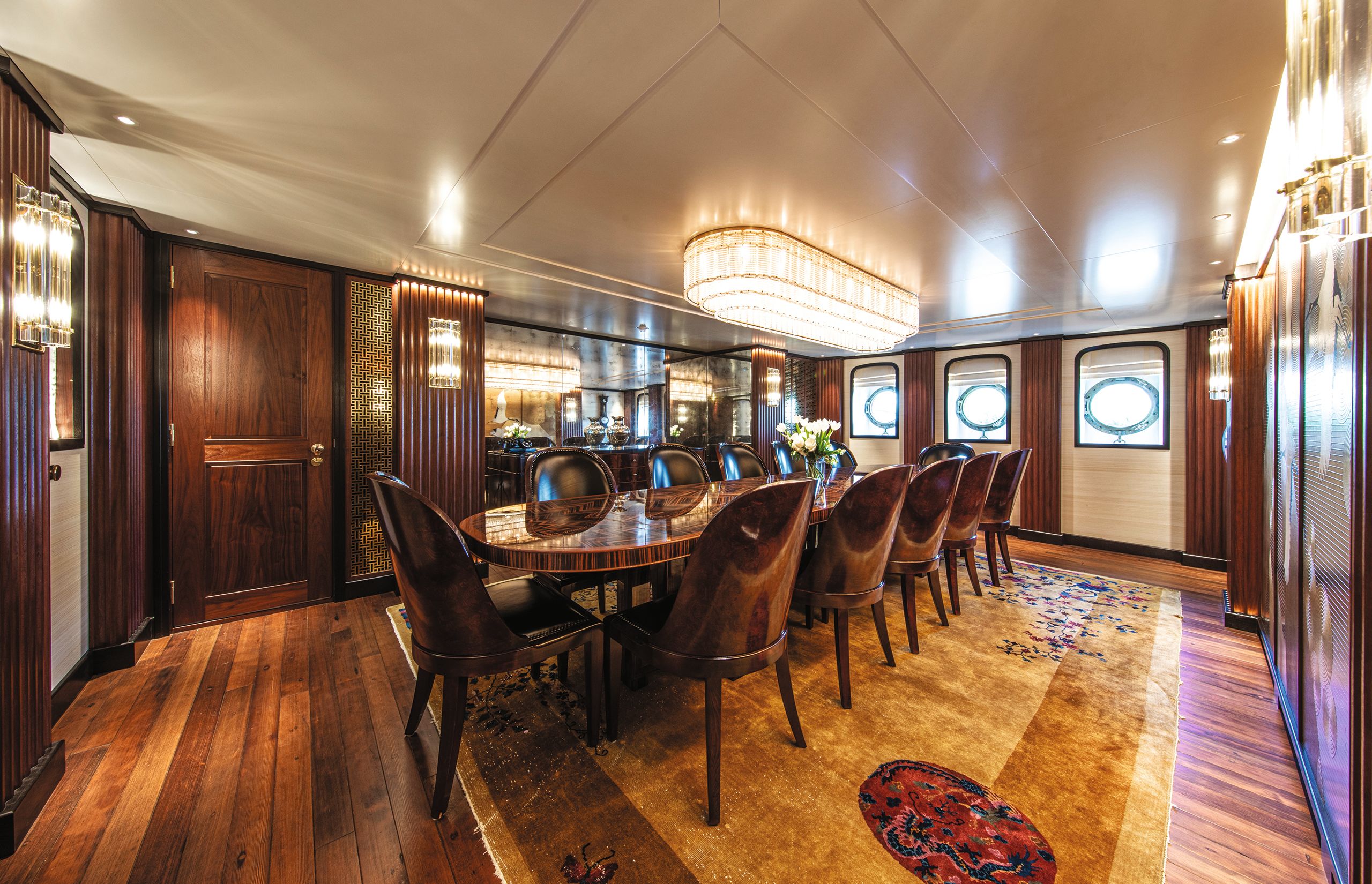

STUART PEARCE - YACHTSHOT
STUART PEARCE - YACHTSHOT

STUART PEARCE - YACHTSHOT
STUART PEARCE - YACHTSHOT

STUART PEARCE - YACHTSHOT
STUART PEARCE - YACHTSHOT

STUART PEARCE - YACHTSHOT
STUART PEARCE - YACHTSHOT
Bottom left and top right: The owner’s main deck study, referred to on C&N’s original plans as the “smoking room”. Bottom right: the cabin sole in the dining room has significant sheer, so the table has been made with unequal leg lengths to keep it level. Top left: the joinery on the saloon’s forward bulkhead is based on drawings found in the National Maritime Museum in Greenwich
“We used 3D modelling throughout the interior to ensure all the spaces could be as large as possible, even with the installation of all the requisite modern systems,” says Pendennis project manager Nick Kearton.
Once the old carpets in the main deck accommodation were removed, they discovered that the soles were made of Douglas fir that came from trees that were already around 300 years old at the time Marala was built. These have now been restored and reused.
Hutchins has striven to address the “incredibly dark and oppressive spaces”, which he found in some parts of the boat, by careful choice of fabrics, the addition of mirrors and by maximising the natural light from outside. Much of this light comes through the original portholes, which were made by John Roby Ltd who also made those for the Titanic.
Over the years, a number of changes had been made to Marala’s external appearance and layout “but the ship got really bulky, was top heavy and had lost some of her elegant lines, so there was a little bit of a stripping back”
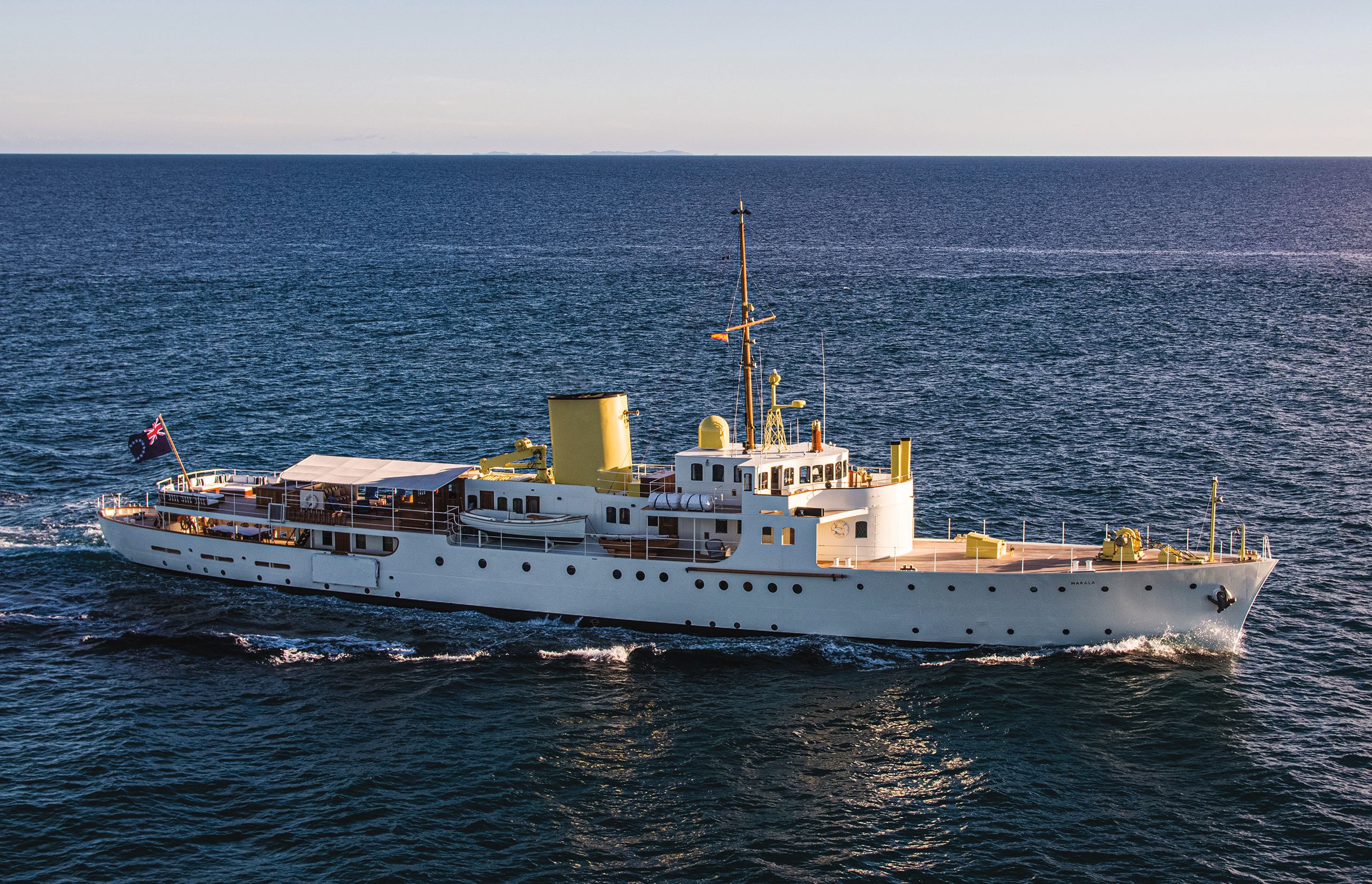
With regard to the fabrics, “we wanted to play with the history of the boat,” says Hutchins. “But at the end of the day, this is the owners’ yacht and so there also had to be touches of their personality throughout.” In particular, the owners have a love of art deco, and that is reflected in many areas, not least their own cabin “which is a little bit of a nod to the 1930s liner SS Normandie and includes a lovely de Gournay chinoiserie panel on the forward bulkhead,” says Hutchins.
The berth surround in the Japan cabin is clad with 66 goat skins that were individually dyed in deep red and then meticulously arranged so that the small variations in colour blend together; in the Savoy cabin a rather short sleigh bed from the 1950s refit has been lengthened and then replicated to provide a twin; and as a homage to the source of Lopez-Willshaw’s fortune, the bulkhead fabrics in the Gaviota cabin are “reminiscent of seagull feathers”.
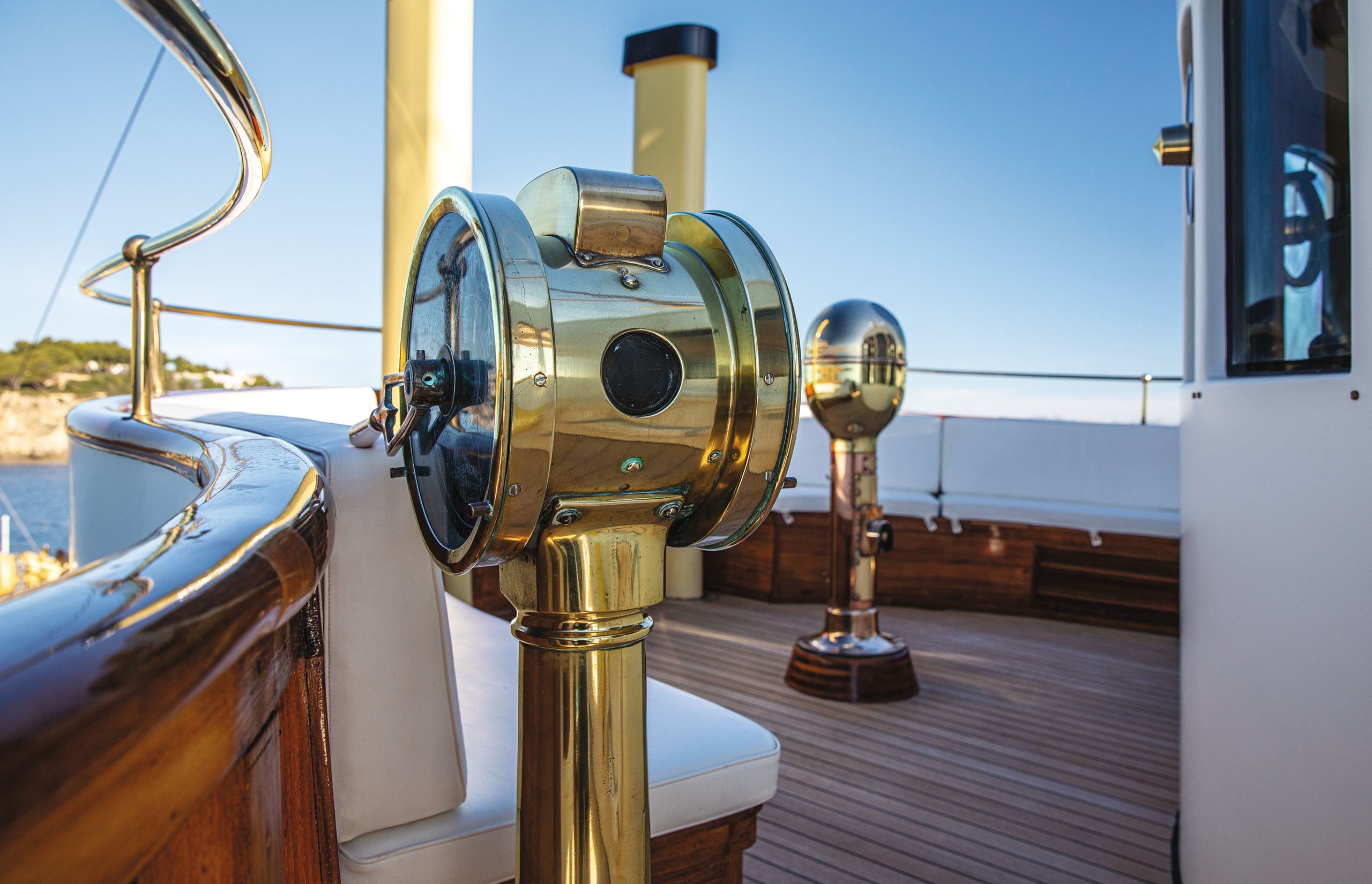
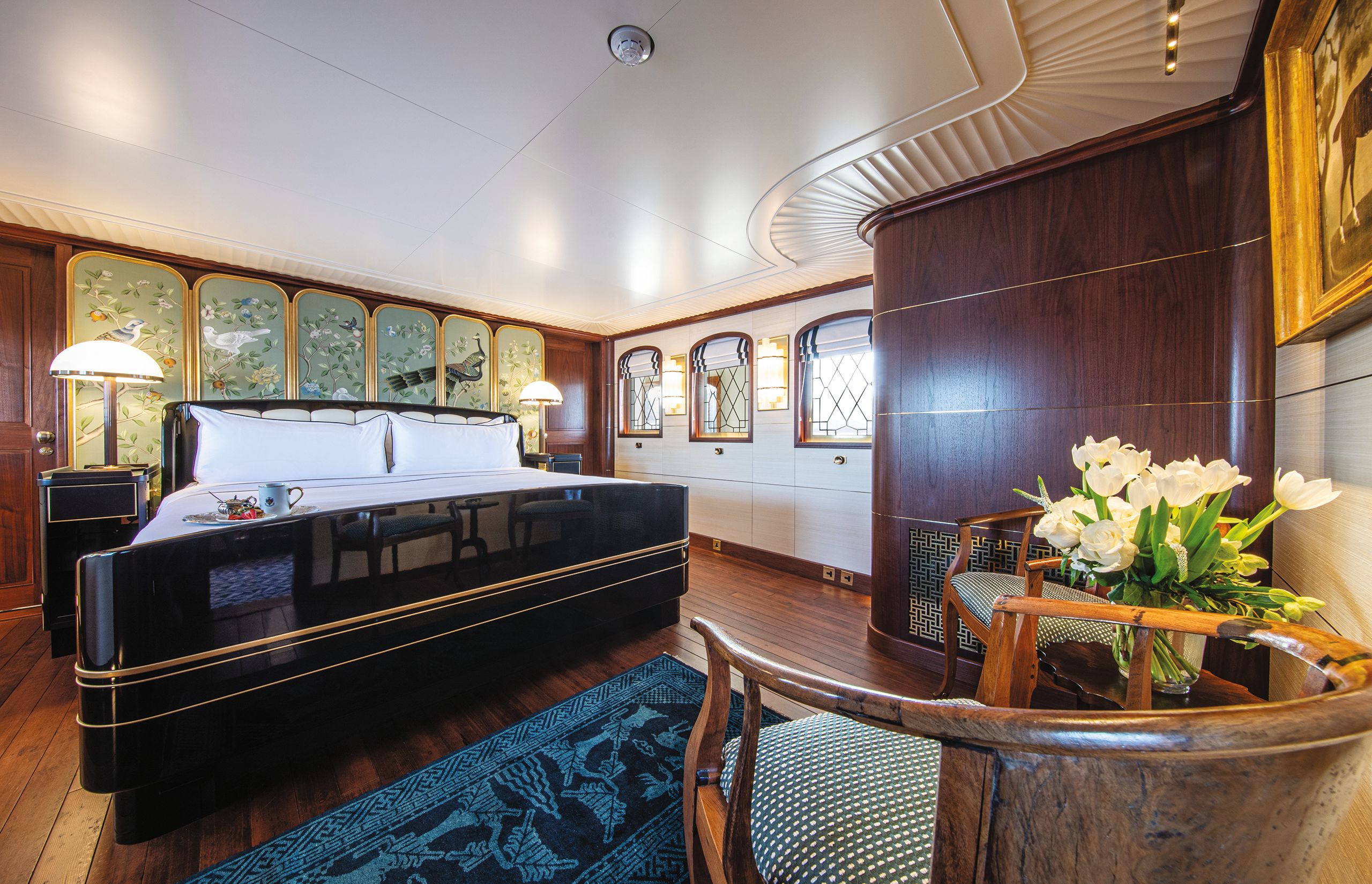
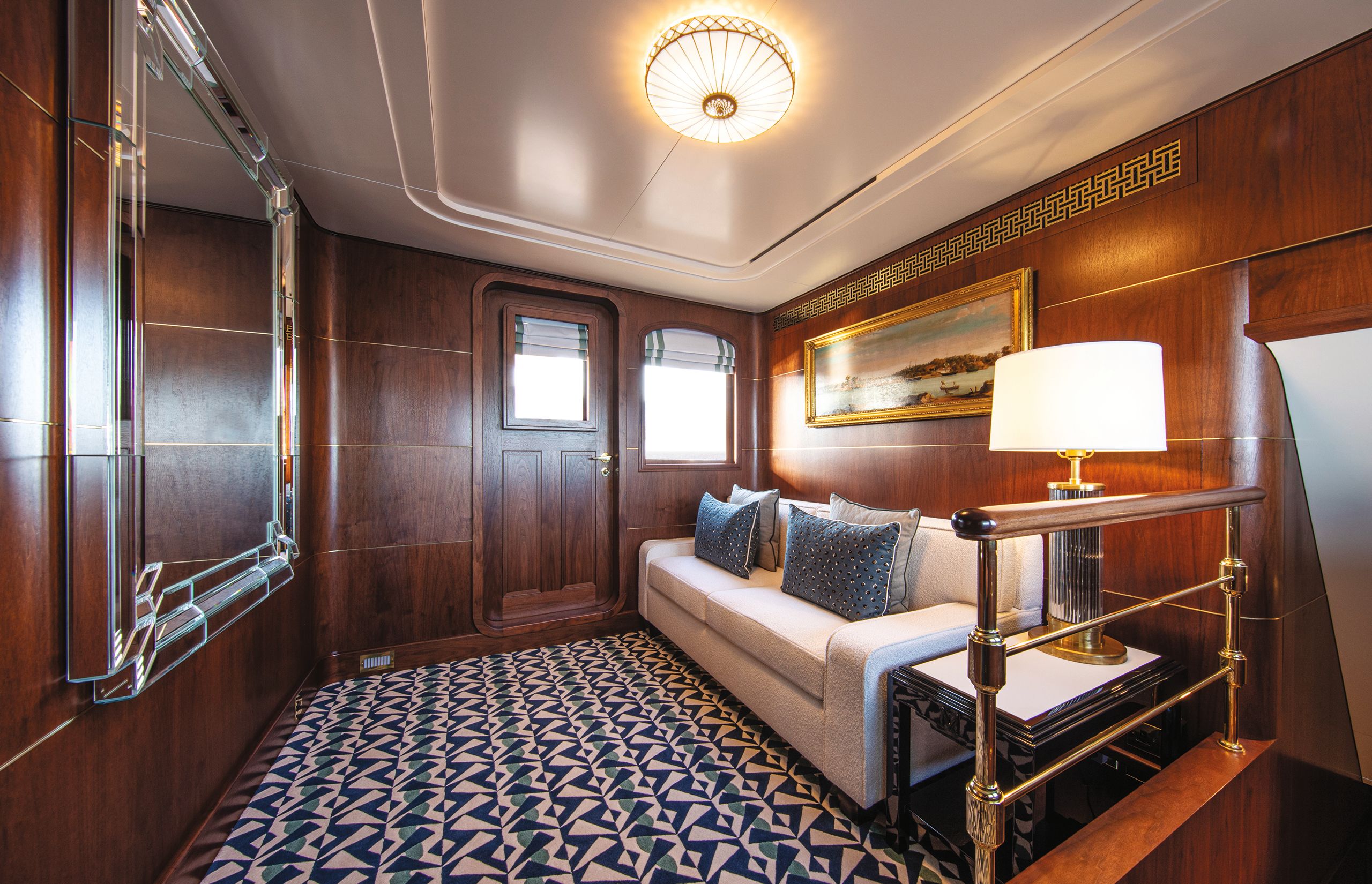
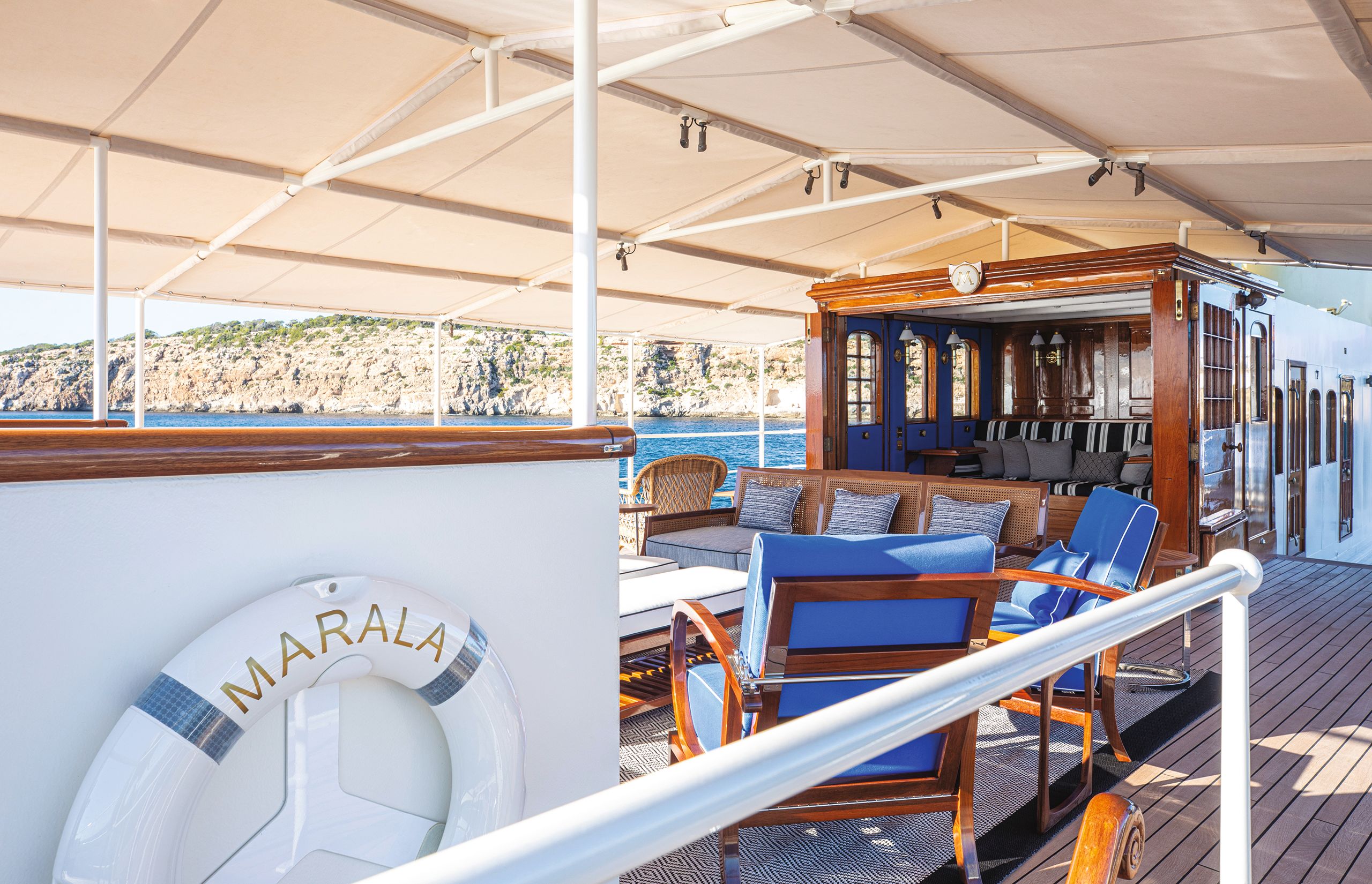

STUART PEARCE - YACHTSHOT
STUART PEARCE - YACHTSHOT

STUART PEARCE - YACHTSHOT
STUART PEARCE - YACHTSHOT

STUART PEARCE - YACHTSHOT
STUART PEARCE - YACHTSHOT

STUART PEARCE - YACHTSHOT
STUART PEARCE - YACHTSHOT
Top left: a mechanical telegraph system is still used for communication between the bridge and the engine room. Bottom right: the refit replaced a fixed roof structure that was aft of the upper deck shelter with an awning. Top right: the owner’s cabin is entered through a landing area that acts as a small private lounge. It takes the place of what was originally the captain’s cabin
Although most of the joinery is new, many old fittings have been restored and reused. These include a multitude of brass door and drawer fittings; four light fittings that have been completely refurbished by Dernier & Hamlyn; a small stool from each cabin, all of them restored and reupholstered; a Second World War Ministry of Defence-issue clock on the bridge; much of the artwork that was hanging on the bulkheads; and “lots of little treasures and discoveries throughout the boat”, says Hutchins. Furthermore, 22 refurbished 1930s US Post Office telephones have been installed.
In addition to the steel hull structure made good in Malta, Pendennis replaced a further 100 tonnes or so, while most of the deck structure was found to be in good condition. The outside of the hull has been painted with a matt finish and with no fairing filler. “There is not much call for such a finish on yachts these days,” says Kearton, “but the owners are very sympathetic to Marala’s history and that is how her hull would have been treated originally.”
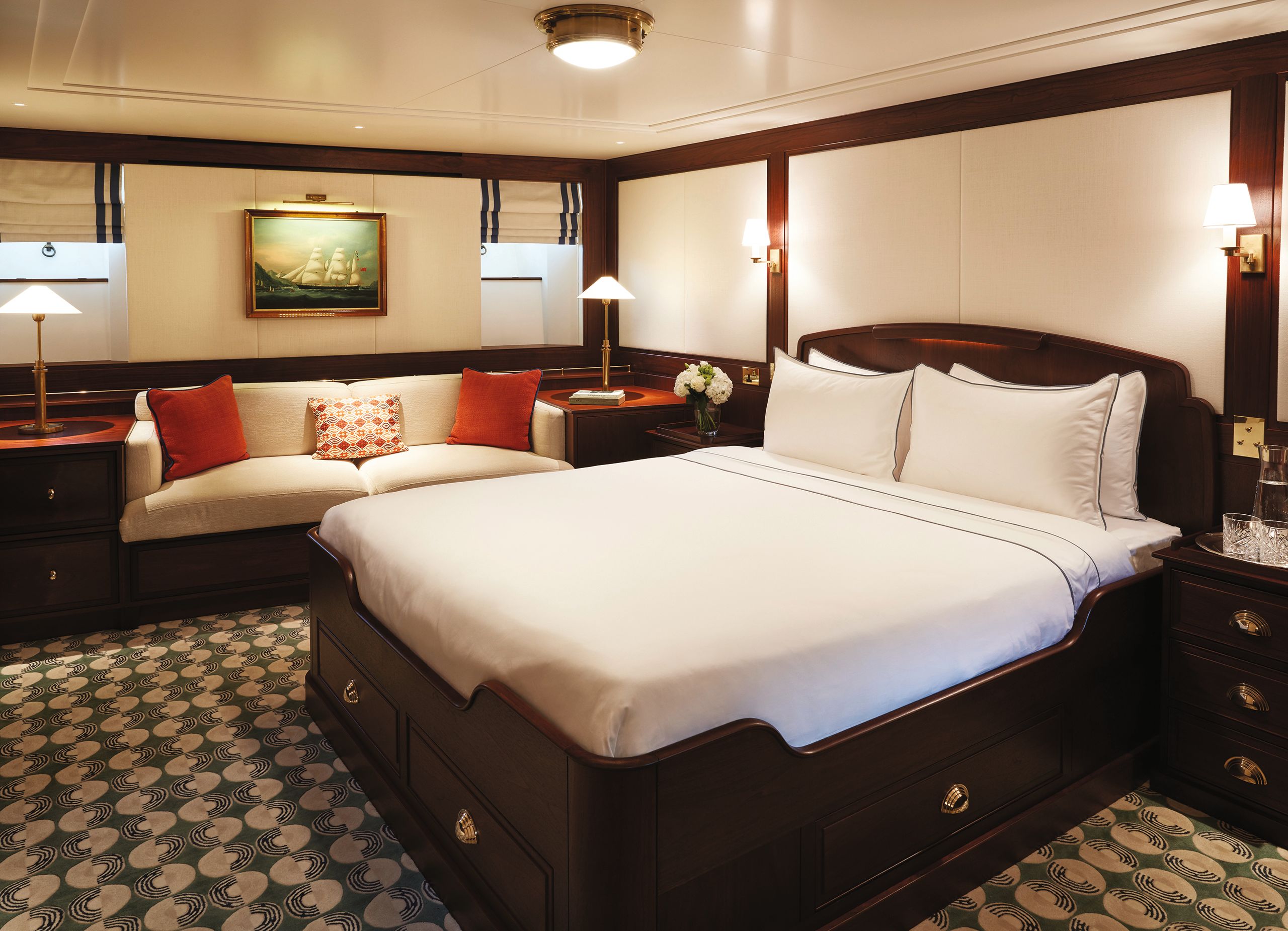
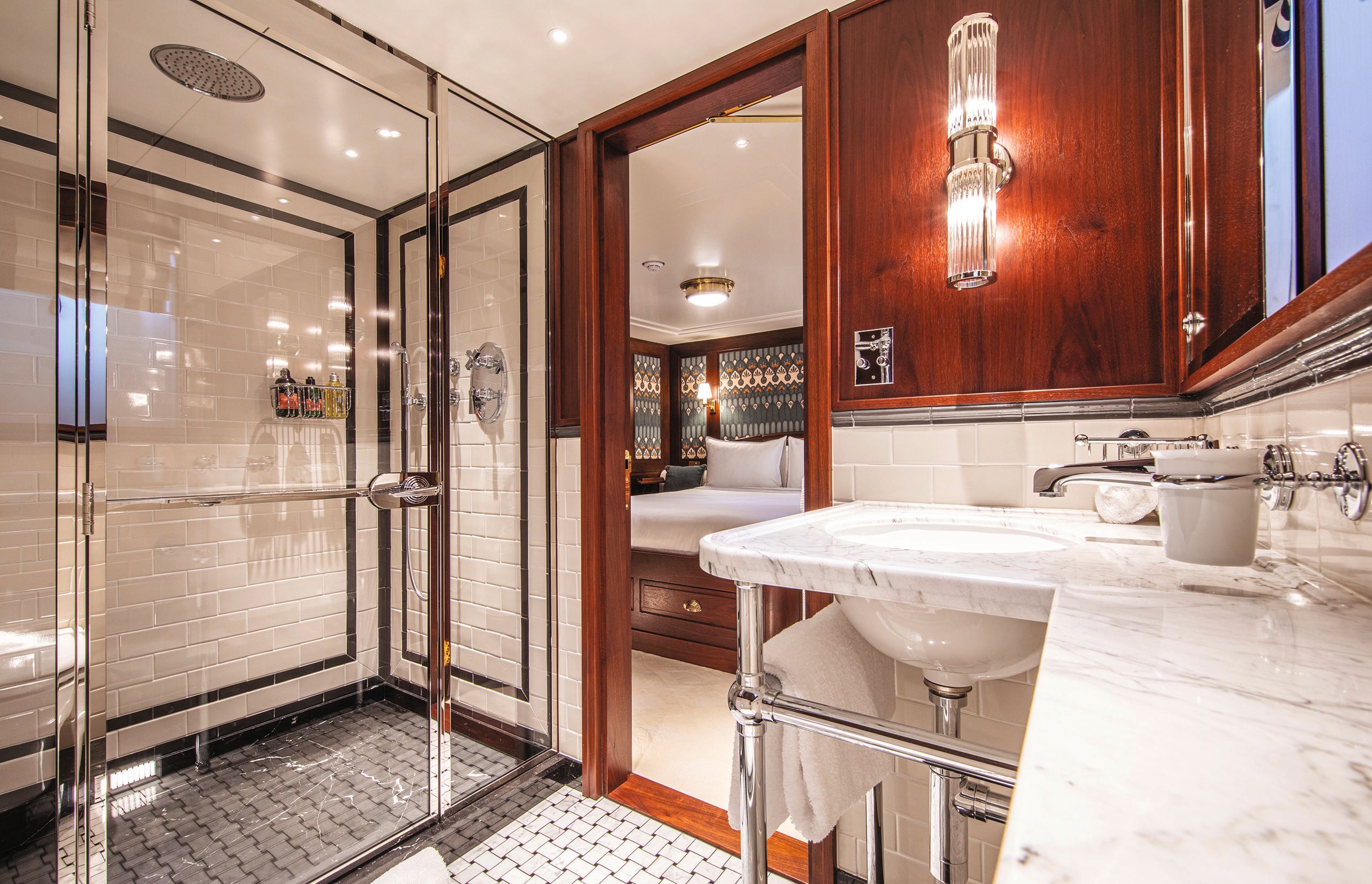
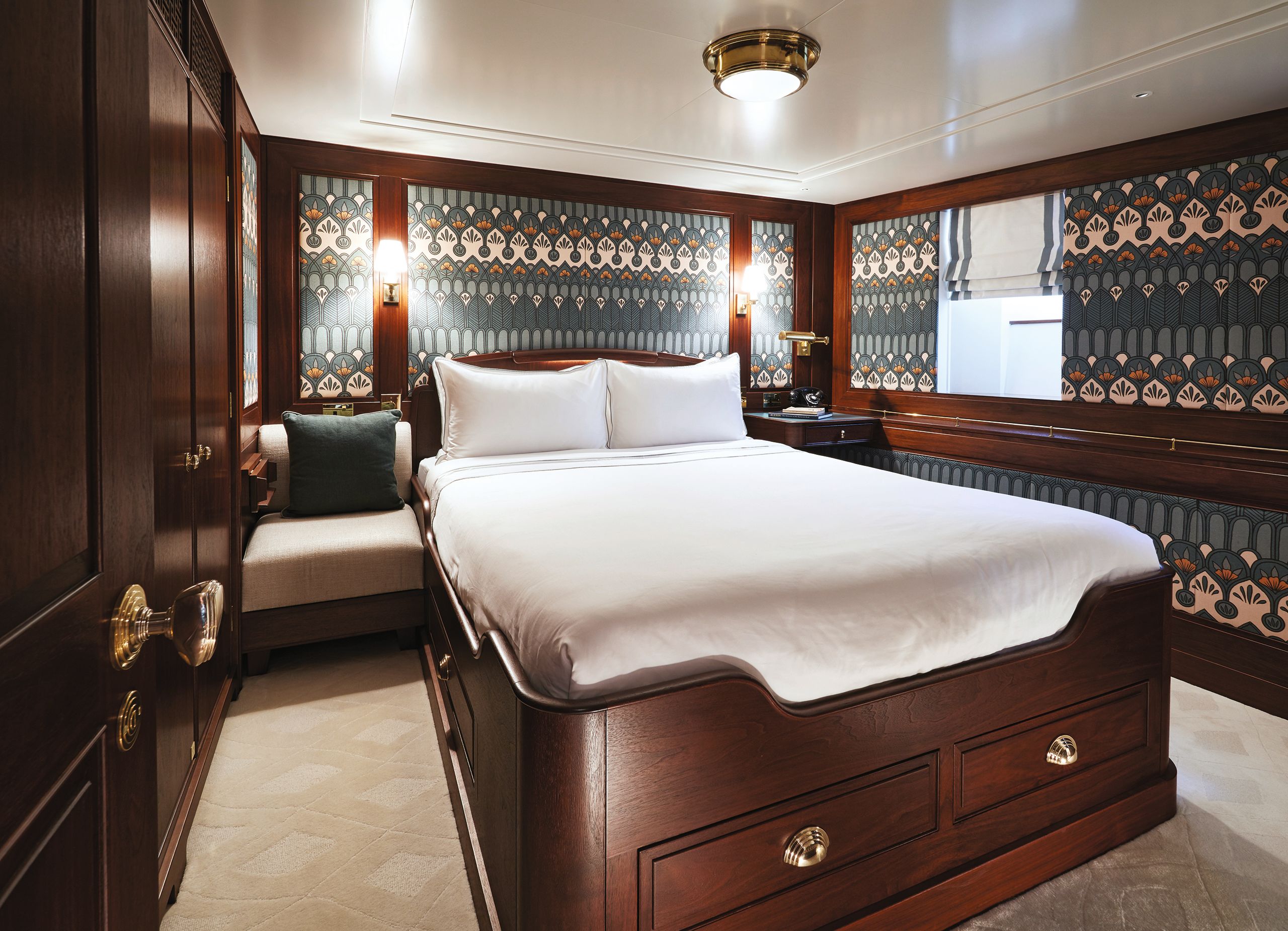
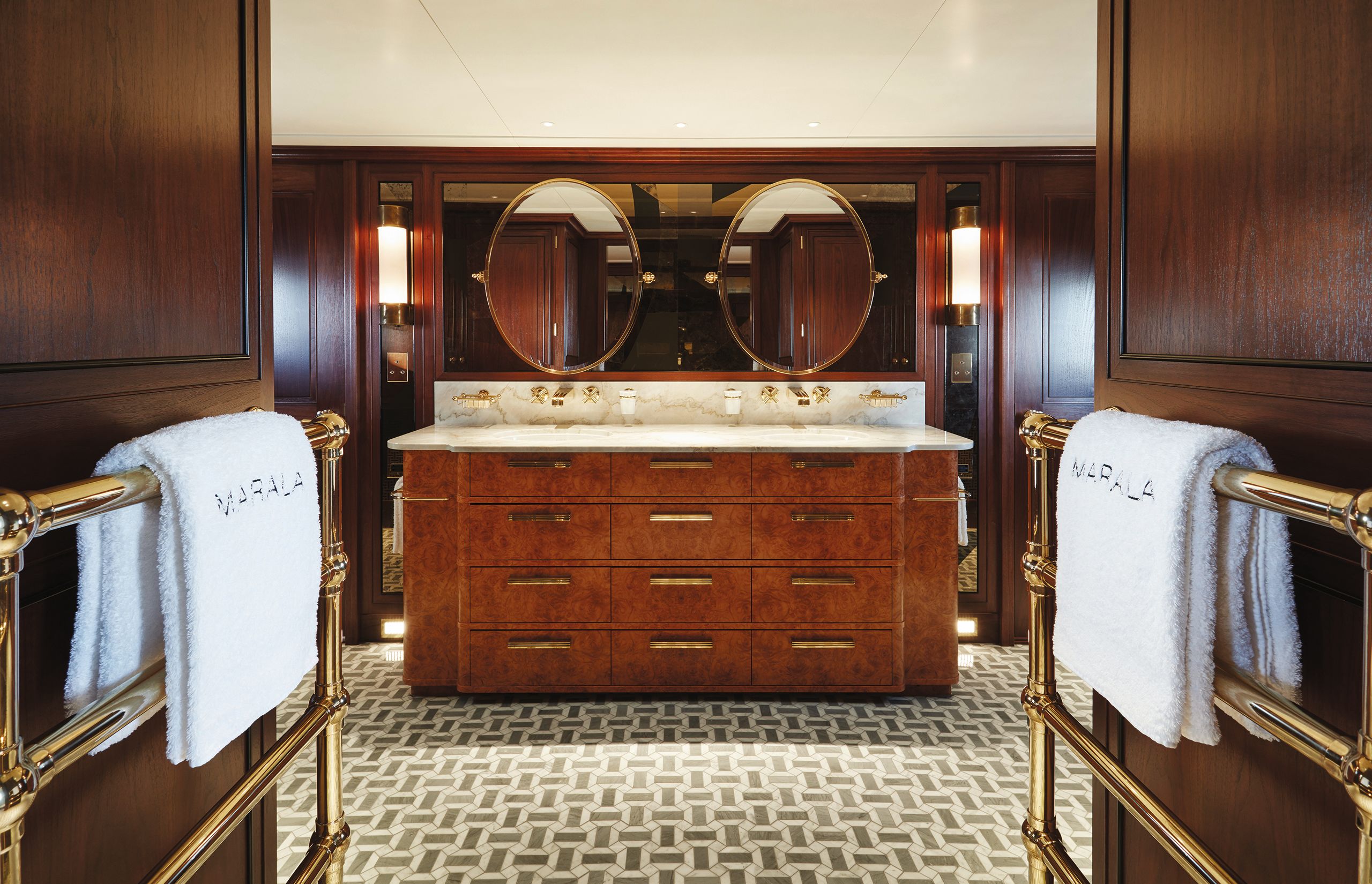
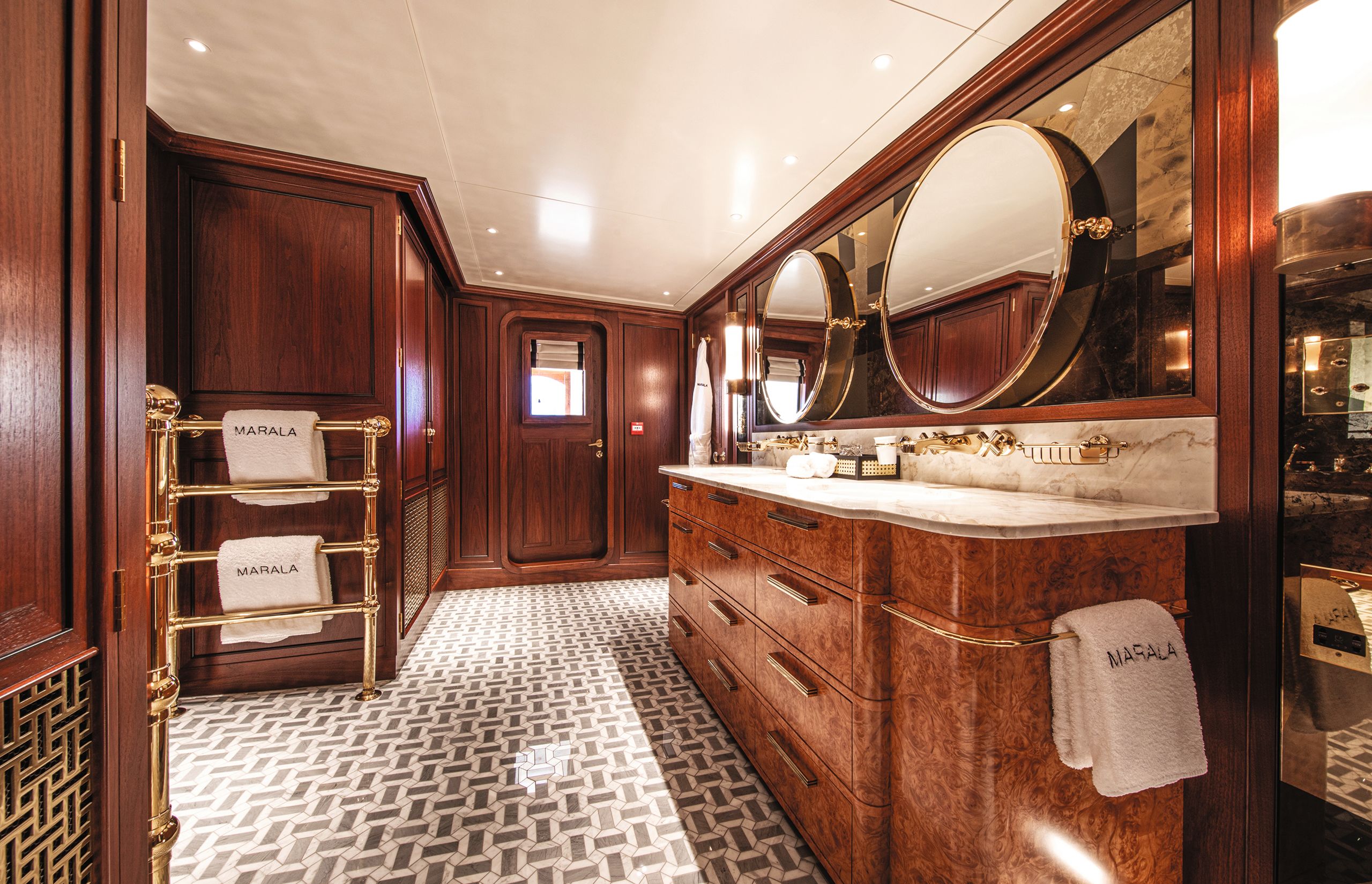


STUART PEARCE - YACHTSHOT
STUART PEARCE - YACHTSHOT

STUART PEARCE - YACHTSHOT
STUART PEARCE - YACHTSHOT

STUART PEARCE - YACHTSHOT
STUART PEARCE - YACHTSHOT

STUART PEARCE - YACHTSHOT
STUART PEARCE - YACHTSHOT

STUART PEARCE - YACHTSHOT
STUART PEARCE - YACHTSHOT

STUART PEARCE - YACHTSHOT
STUART PEARCE - YACHTSHOT
The 388 cabin (top left) harks back to the yacht’s genesis as the 388th launch from Camper & Nicholsons. The decor includes linen and carpet based on the original spec and detailing from C&N’s blueprints. Top centre: the Evadne cabin’s en suite. Each guest cabin captures the nuances of a specific era in Marala’s history, like the Evadne (top right) and Japan cabins (bottom right). Bottom left: the owner’s en suite
Marala is now in the Mediterranean where she will be based for the foreseeable future. “Initially we will have a reintroduction to the vessel for my family,” says the owner. “Then I would love to be aboard Marala a few times every year and we will try to find a balance between that and letting other people use her on charter. There has been a lot of interest in that, which is not surprising as there aren’t many of these old girls left in the world.”
There is no doubt that the owners’ aspirations have been realised, particularly in merging old and new. The project has peeled back layers to reveal the beauty of the original design and enshrined precious artefacts to acknowledge her history through the 20th century. But it has also made her a functional and comfortable boat fit for the 21st century – ready to begin a whole new chapter in her fascinating life.
First published in the March 2023 issue of BOAT International. Get this magazine sent straight to your door, or subscribe and never miss an issue.
The captain has a cabin behind the wheelhouse
The owner’s cabin is private, sitting alone
on deck
Crew cabins span both the main and lower decks
The “smoking room” is now the owner’s study
A massage room is found near two of the guest cabins
The engine room is huge to accommodate the original eight-cylinder engines
The lazarette gained space when one guest bathroom was removed

